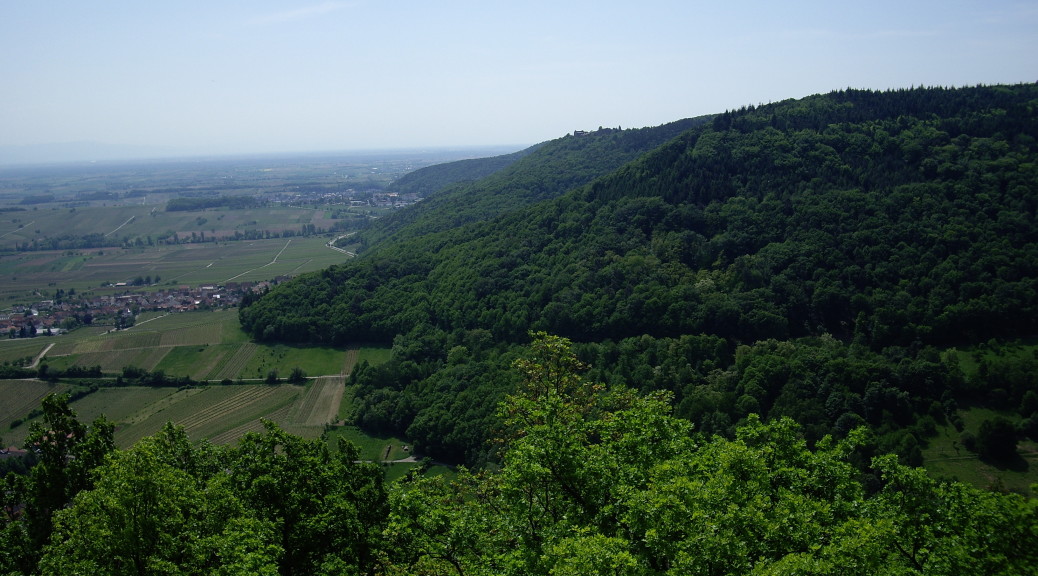The Weintor, a towering gate marking the beginning of the German Wine Route (Deutsche Weinstrasse), will forever mark in my mind the first step of a fantastic journey: A wonderful hike through the glorious and relatively unknown German wine districts of Suedliche Weinstrasse and Mittelhaardt in the fabulous region of the Pfalz in southwest Germany.
Long my dream to hike all 60 miles of this trail, there never seemed to be enough time to hike more than short segments of it. So, celebrating a serendipitous opportunity, I began my hike at the Weintor, specifically in the cooperative’s wine bar, with a glass of Sekt, German sparkling wine. Then I happily set foot on the trail, just outside the door, to begin what has become a passion: hiking wine country trails.
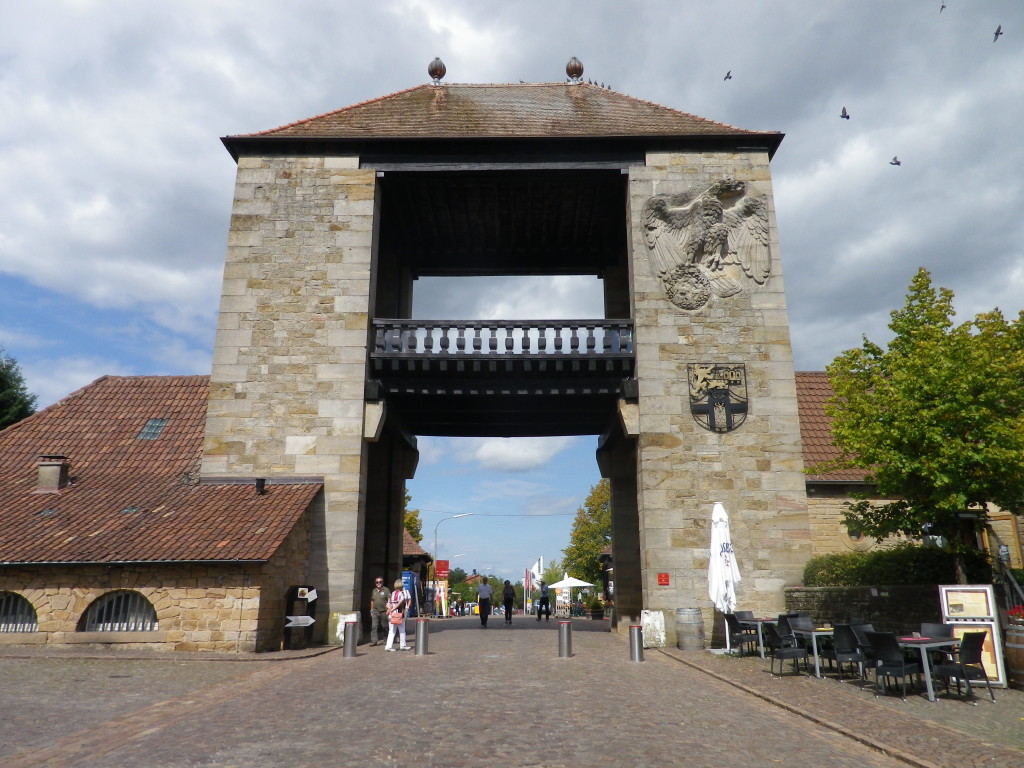
Leaving the Weintor behind, I looked forward to revisiting Doerrenbach, a timeless village, off the beaten path, hidden behind hills, surrounded by forest. In addition to what looks like an old, fortified church, it has a great gasthof, with a quaint outdoor patio under trees to provide shade and entertainment as hikers, bikers and locals pass by. The walk out of town along a restful forest path is cool: Literally and figuratively. It provides both a nice change to vineyards and fields, and much-needed shade.
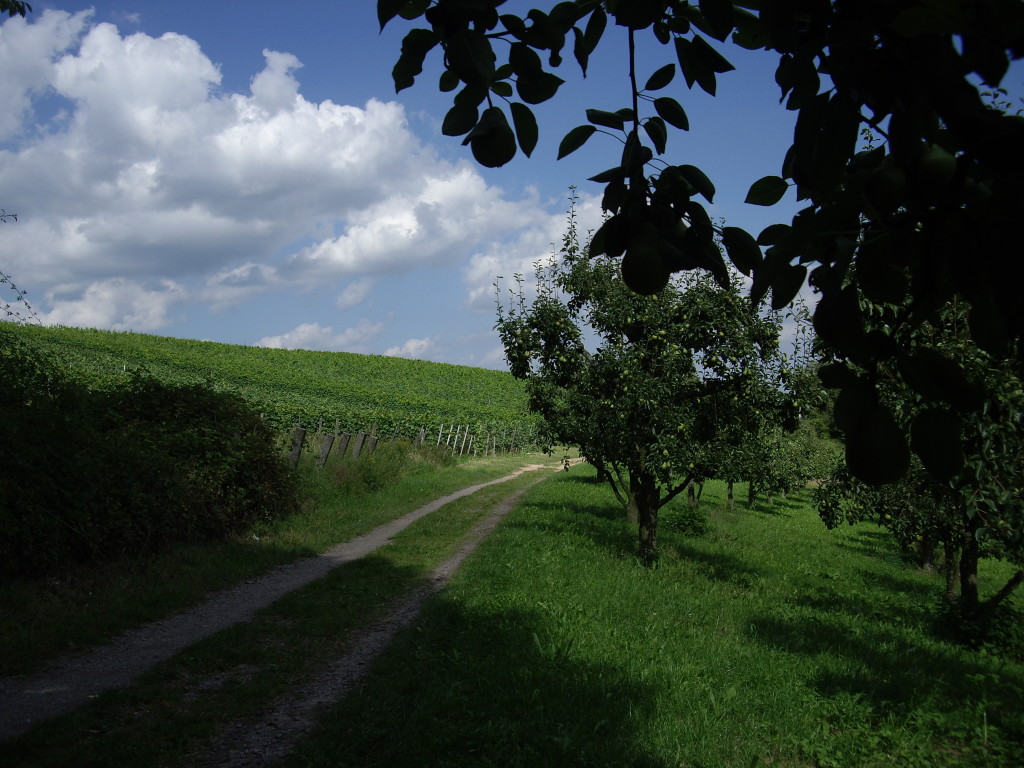
By contrast, Bad Bergzabern is a bustling town that caters to guests. As the term “Bad” denotes in German, this is a town that offers water cures. There is a fine spa pool, open to the public, a kneippbecken (a shallow pool ideal for walking sore feet through), and various therapies for weary hikers. And this town attracts a lot of them because it is also a gateway to the vast Pfaelzerwald, an immense, forested, hilly area stretching north and south, from Germany into France, along the western side of the Rhine River valley. It is one of the largest forests in Germany, and it continues for miles into France as well. Short hikes, circuits and several prize-winning long distance hikes (some of which cover both sides of the border) pass near or through Bad Bergzabern, which offers tourists a variety of facilities for sleeping, eating, parking, and a helpful tourism office.
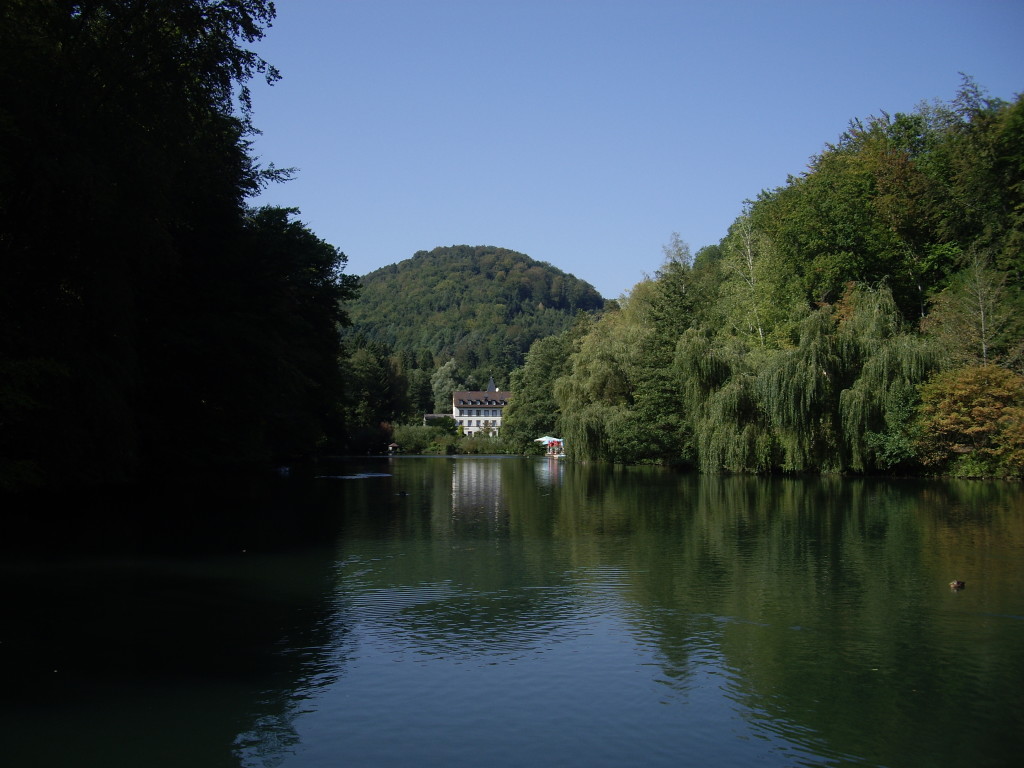
Continuing to Gleiszellen-Gleishorbach, the trail winds through the conjoined villages, and past a marvelous chapel, set among the vines, and then continues north under the shadow of Burg Landeck, one of many castle ruins in the Pfalz, with a marvelously panoramic terrace, and a popular gasthof. Only a few kilometers north, but further off the trail, you will see the Madenburg castle ruins. It, too, has a great panoramic terrace and small gasthof, proving that you are spoiled for choice here when it comes to castle ruins offering food and wine!
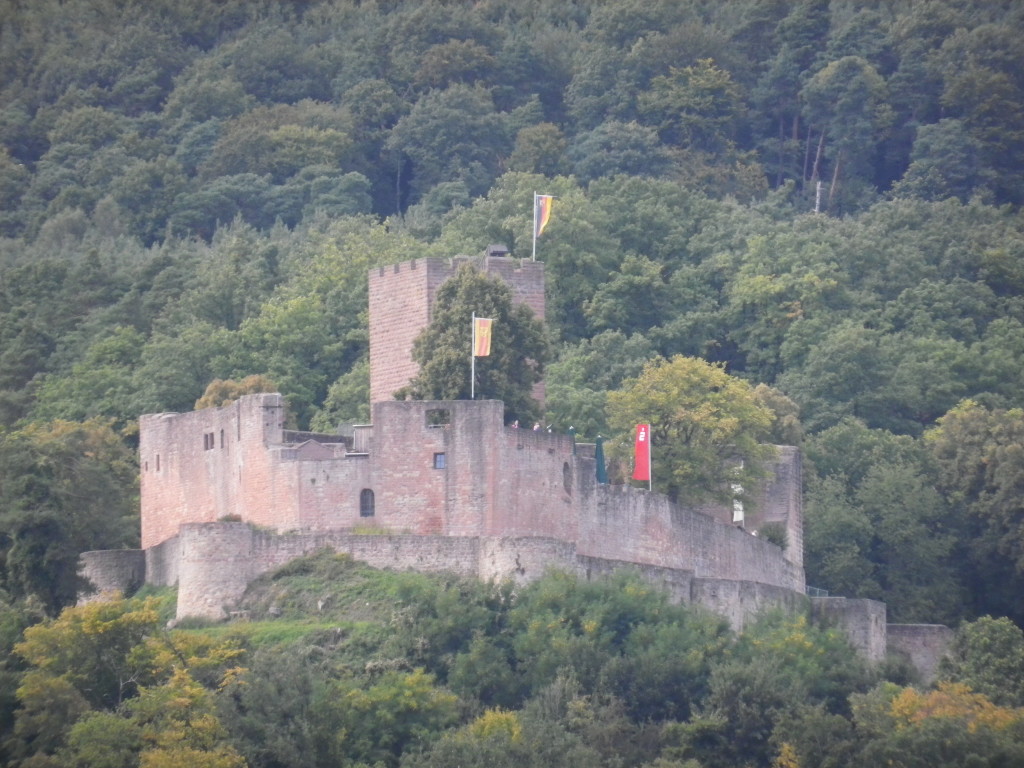
I finally came to rest in Leinsweiler, with the ruins of Neukastell high above it. While Neukastell doesn’t have a gasthof, nor even a huge terrace, I know from my castle-hiking days that it has a great view, and is a fantastic place uncork your own bottle of cool, Pfaelzer wine in the late afternoon, while contemplating from up high the land of the first stage of the Deutsche Weinstrasse Hiking Trail.
The next day, I continued the hike.
From Leinsweiler heading north on the trail, vineyards predominate, and villages are tiny, quiet affairs where viticulture is the day job, tourism definitely the night job. (Even finding a restroom or a café with a restroom proved difficult until an extremely kind woman in Siebeldingen led me to her home). The trail then passes above Albersweiler lying idyllically in a valley overlooked by the Haardt mountains to the west. Burg Trifels, the imperial castle which lodged Richard the Lionheart of England as prisoner, crowns one of the peaks. East of Albersweiler, a wine fest was in full swing in the vineyards overlooking the village.
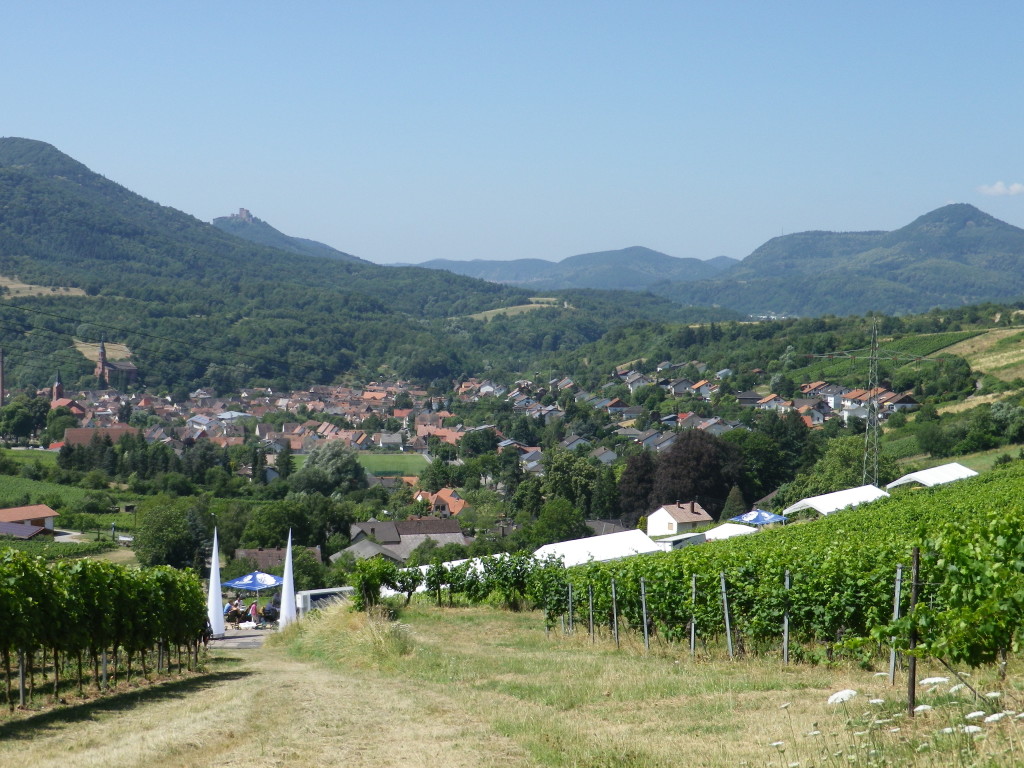
The climb away from the edge of Albersweiler is more challenging, but the view is as equally rewarding. The Rhine valley lies wide open to the east, vineyards covering much of the near distance. Fortunately, the path winds its way between the uppermost vines, and the beginning of the tree-line. It is a gentle, shaded walk to Gleisweiler, one of my new favorite villages. The upper town is a mix of quaint old village, and elegant spa town. Places to eat and drink may be found, and local wines predominate on the wine lists, not surprisingly.
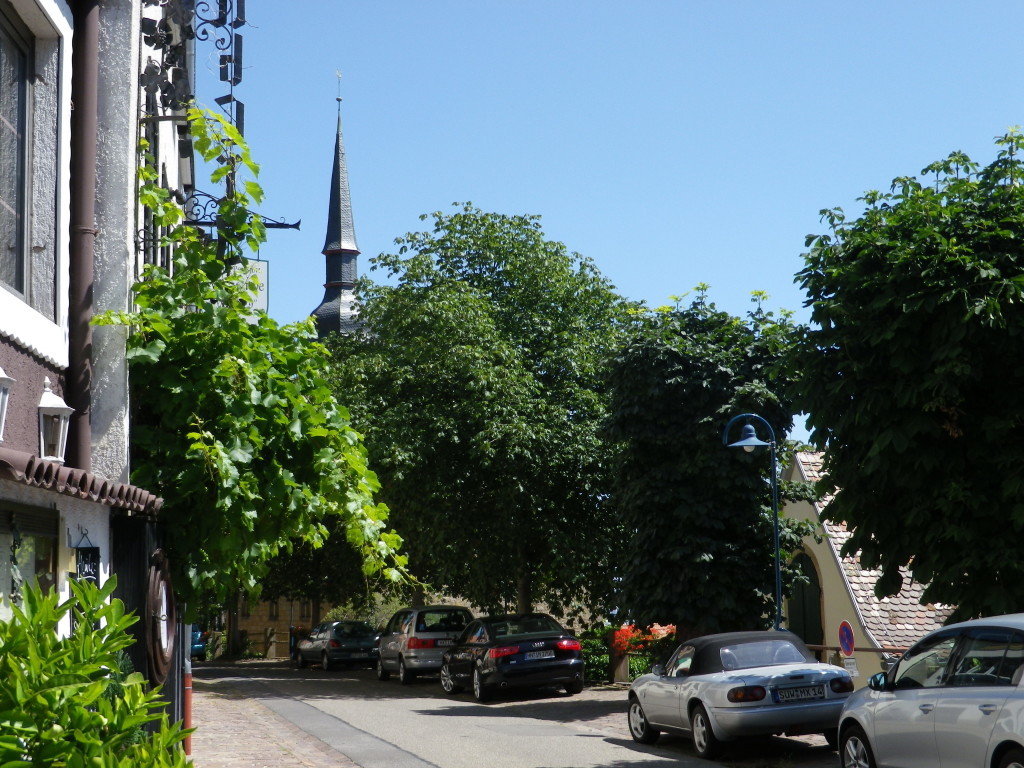
The path continued along the mid-ridge line, through the dark forest, around a deep draw, coming out at the “highest winery in the Pfalz” on St Annaberg. The gaststatte there, perched on a ridge, sells samples of its own wines, and best of all, experiences an almost constant, cool updraft from the valley below!
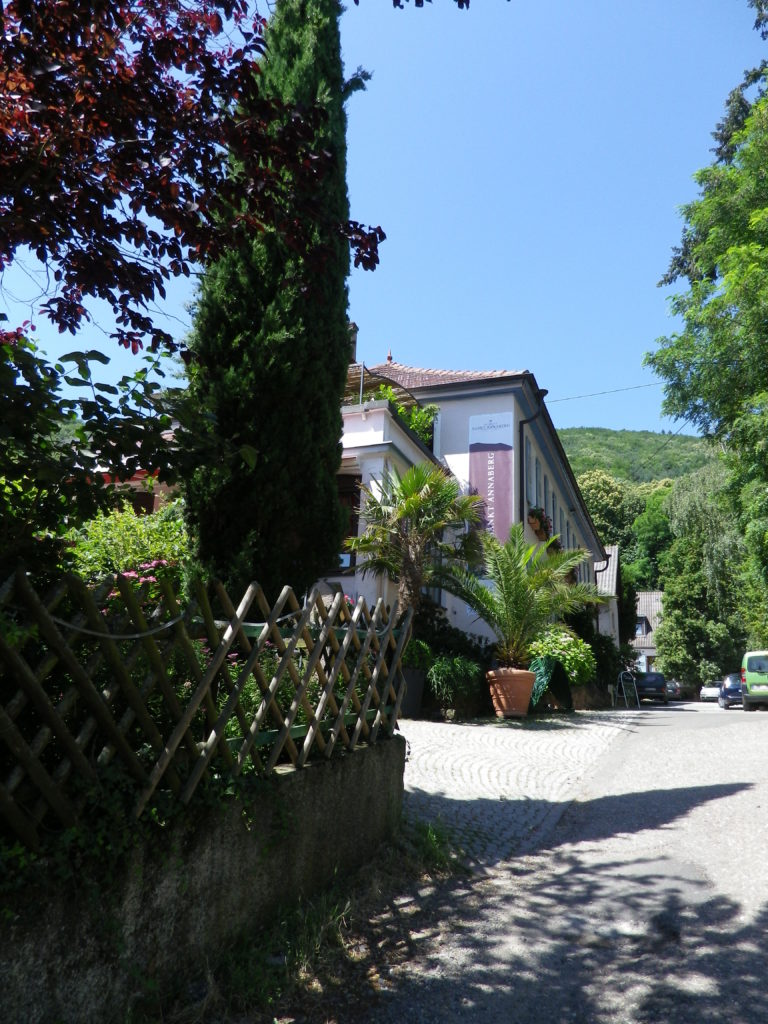
From there, the mostly surfaced path leads through the vineyards to Burrweiler, then Burrweiler Muehle (Mill), by a little brook. The trail begins an ascent to and through Weyher in der Pfalz. From there, it was only a couple of kilometers to the classical-looking Villa Ludwigshoehe, part-way up a wooded slope.
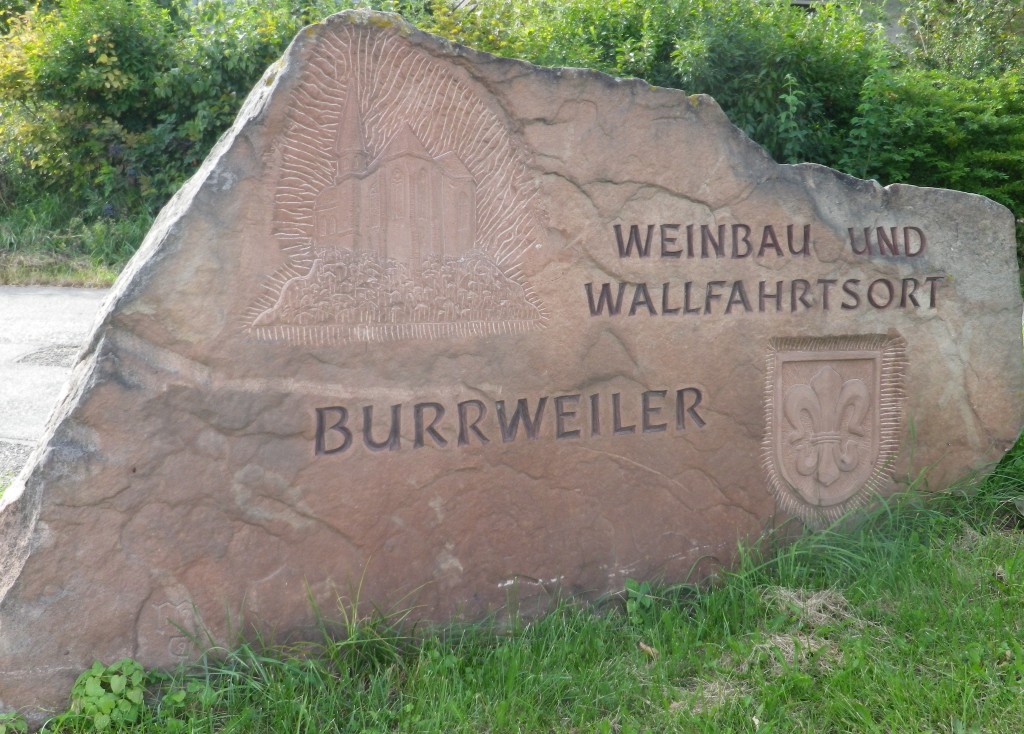
This villa, built by the original Ludwig of Bavaria, is a landmark. The trail reached the southside of the villa, before continuing past the Cavaliersbau building, and down the hill to Edenkoben’s outskirts. Edenkoben itself is a cute town, with many wineries, eateries and places to sleep. While it is about a mile east of the trail, public buses run from the villa to the center of town.
On the third day, the shortest day, I left Edenkoben and continued uphill through quiet vineyards and forest, past the castle Klopsburg ruins and its adjoining restaurant, into Sankt Martin, another of my favorite villages on the trail. Compact, photogenic, and filled with wine bars and restaurants in half-timbered buildings and their adjoining, flower-filled courtyards, it is a great place to stop and enjoy the moment.
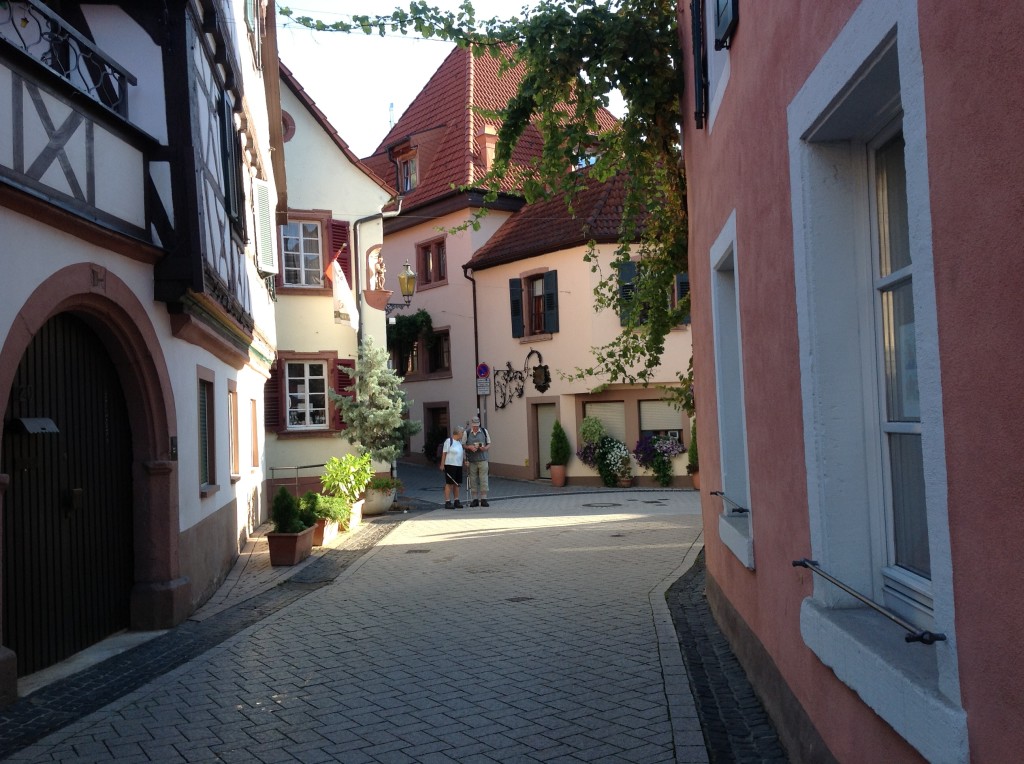
From there, with the impressive Hambacher Schloss in sight on a distant hilltop, the trail continues through vineyards, and then residential areas, as it approaches the historic center of Neustadt an der Weinstrasse. This town, with its old half-timbered houses, narrow streets, and historic sites, is the largest town in the area. It marked the end of the Suedlicher Weinstrasse wine district, and concluded the first part of my hike along the Deutsche Weinstrasse Hiking Trail.
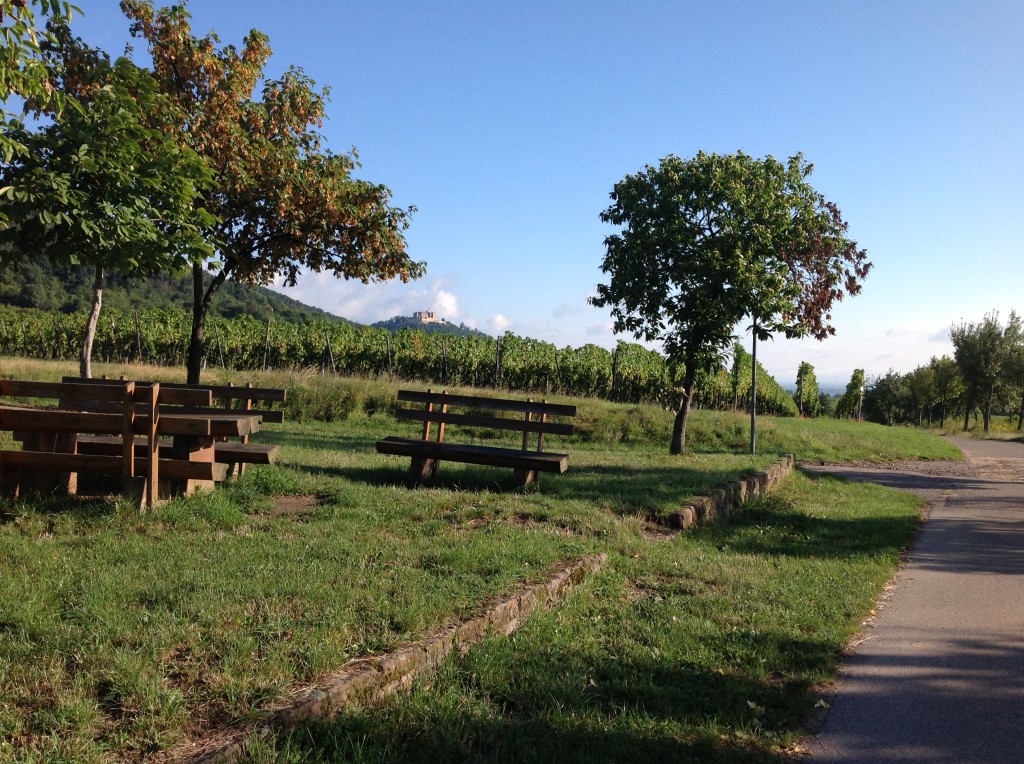
Click to read about the Deutsche Weinstrasse Hiking Trail and the southern Pfalz Wine Region in general.
